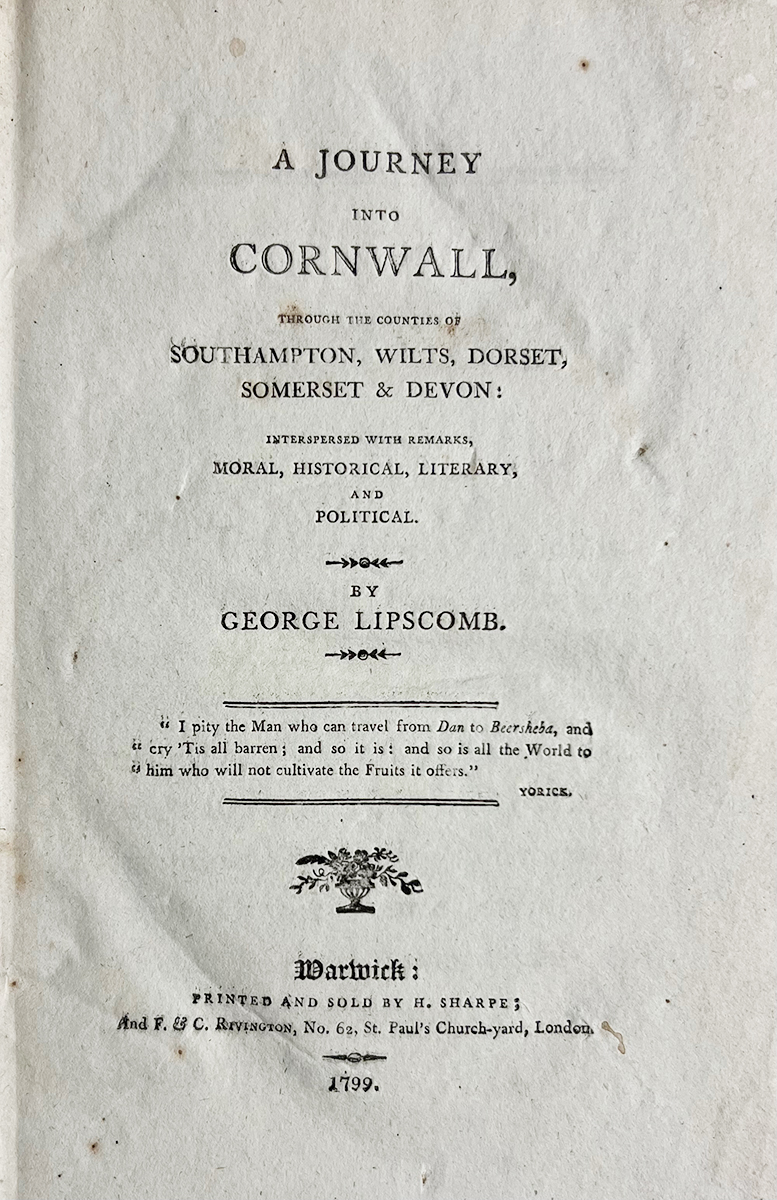 By Emma Laws, Cathedral Librarian
By Emma Laws, Cathedral Librarian
If TripAdvisor had existed in the 18th century, I wonder what people would have said about the city of Exeter and its Cathedral? There would surely have been some mention of the “excellent inns”, the “fine river” location and the “beautiful and spacious walk planted with fine elms… called the Northernly [Northernhay Gardens]… to which the inhabitants resort in the evening as a mall for walking”. Perhaps, too, there would be some mention of the approach to the city: “In this part of the country, you have no sooner descended one hill, than you have another to climb up”.
Naturally, there would have been some negative remarks among the positive: “the principal streets are narrow and badly paved” and “The Cathedral Church is situated very disadvantageously, on a piece of low ground, which is so closely planted with trees, and divided by railings, that there is neither a view of the building, nor any commodious approach to it.” As for affordability – there would certainly have been some complaints at the “Innkeepers’ charges”.
These comments were made by George Lipscomb in his 1799 travelogue, A Journey into Cornwall through the Counties of Southampton, Wilts, Dorset, Somerset and Devon. The Cathedral Library recently received a donation of the first edition in an original publisher’s binding. George Lipscomb (1773-1846) was a surgeon at St Bartholomew’s Hospital in London and a writer on various subjects, including medicine and antiquities. He was evidently also a keen traveller and something of a bibliophile.
Lipscomb makes various observations about the Cathedral but his principal interest lies in the Library, situated in the Lady Chapel at the east end:
“behind the Choir, is a Library containing a great number of scarce, and some valuable books… This Library is much visited by the curious; and the Clergy belonging to the Church are so liberal as to indulge any gentlemen who request it, with the permission of resorting hither for the purpose of reading as often as they choose.”
Lipscomb does not mention specific ‘valuable books’ in his review of the Cathedral Library – perhaps he saw the Exeter Book and Exon Domesday. However, he must have been very interested in the Library’s magnificent medical collection – a recent donation by a local physician, Thomas Glass, in 1786. Indeed, Glass had stipulated in his will that his collection should be made available to medical students and practitioners – like Lipscomb.
Evidently, Lipscomb was very impressed with the Cathedral Library, and it is useful today to discover that it was “much visited” not only by the clergy but by “any gentlemen”. Curiosity is still the only prerequisite for visiting the Cathedral Library – though, of course, today we are open to all.